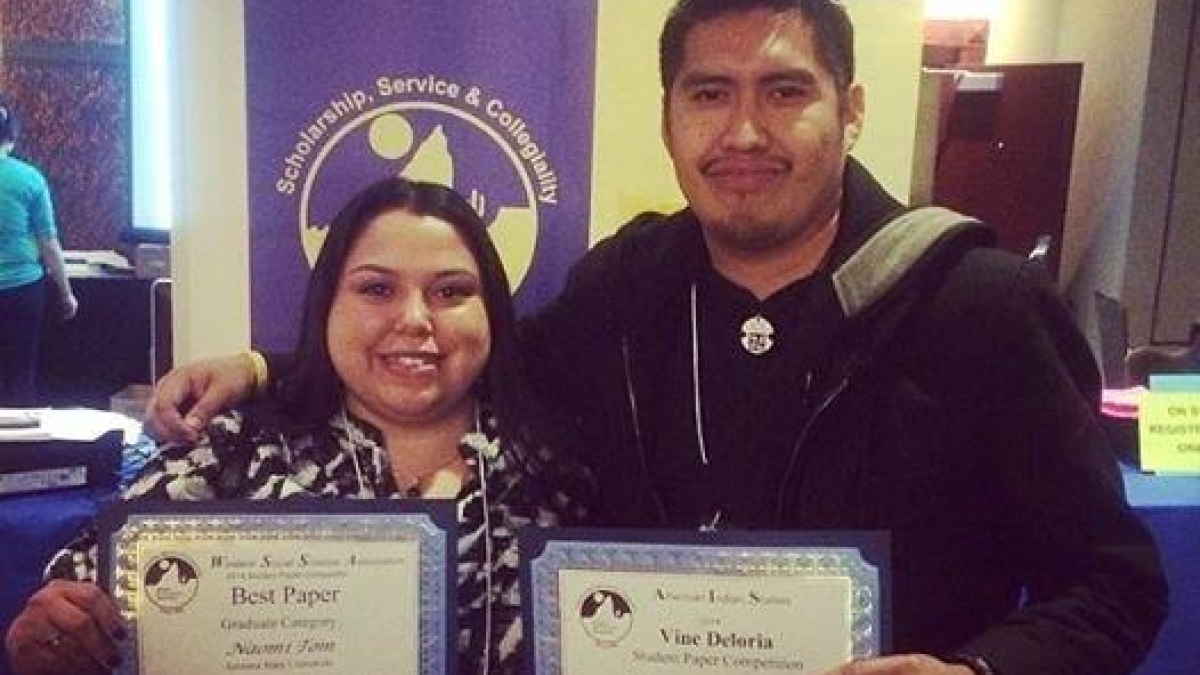American Indian Studies grad students take home honors, participate in summit

American Indian Studies graduate student Naomi Tom has been awarded first place in the Western Social Science Association Student Paper Competition for her paper, “Protecting Our Communities Through Tribally Operated Institutional Review Boards.”
Tom’s paper examines tribal codes that address research and help ensure that it is done according to tribal beliefs. Focused on the Colorado River Tribes - Navajo, Mohave, Hopi and Chemehuevi – Tom’s paper explains the role of an ethics review board that works to make sure there is no harm done to the tribe and its people through research. The paper reflects a small part of Tom’s thesis project on tribal research and the processes that regulate it.
“There aren’t that many tribes that have research codes, and not that many people have written about this,” Tom said.
The paper discusses vulnerabilities to American Indian communities by not regulating research, such as exposing sacred knowledge.
“More often than not, unethical research conducted within American Indian communities is a direct result of a disconnect in understanding of worldviews; Western views versus American Indian views of what is considered ethical,” Tom wrote.
It’s also important to consider the ethics of those who will be researched, as well as the researcher’s ethics, and to take into consideration whether or not work with one American Indian tribe will translate to procedures in another tribal nation. It’s also not probable that all tribes will be able to staff, fund and provide infrastructure for institutional review boards, especially among smaller tribes that may have limited resources, Tom wrote.
Besides a cash prize and a certificate, Tom presented her paper at the Western Social Science Association conference. As a member of the first cohort of American Indian Studies graduate students, Tom will graduate in December and will then work on earning her doctoral degree in American Indian Studies.
American Indian Studies graduate student Justin Hongeva also won the Vine Deloria, Jr. Student Paper Award at the conference for his paper, "Past and Present Hopi Leadership: as Contextualized by the Oraibi Split.”
"I feel pride in winning the Vine Deloria Student Paper Competition, not only for who the award is named after and what he represented, but also the content of my paper. The history of our Native communities is important, and through academia, we are given the opportunities to expound the importance of our history and how it has impacted our communities today," Hongeva said. Vine Deloria was an American Indian author, activist, historian and theologian.
In addition to the recent honors, Hongeva and fellow American Indian Studies graduate students Eric Hardy, Waquin Preston and Emery Tahy recently participated in the Indian Education and Leadership Summit sponsored by the Inter Tribal Council of Arizona at Ak-Chin Indian Community. ASU students conducted research, aided in writing a report on the State of K-12 Indian Education in Arizona and assisted in proceedings of the summit. The report that the students compiled was distributed to participants at the meeting.
“The work that we did with the Inter Tribal Council of Arizona in correlation with the Indian Education and Leadership Summit involved myself and three other students researching on the state of Indian education in the state of Arizona,” Hongeva said. “We were charged with researching literature, and focused on contributing factors such as socio/economics, promising practices and a literature review that focused on common core and the history on Indian education, including sovereignty, Indian-controlled schools and culturally responsive schooling.”
American Indian Studies director John Tippeconnic praised the work of the program’s graduate students.
“We are proud of our students. It is an honor for them to be recognized for their scholarly work and to be involved in research that benefits tribal Nations. It is also an indicator that our young ASU American Indian Studies graduate program is on the rise and being recognized nationally,” Tippeconnic said.